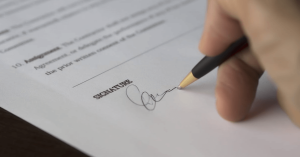Under Australian law, bankruptcy and divorce are two distinct legal processes, but they can intersect. If a person declares bankruptcy during a divorce, it can impact the division of assets and debts. Conversely, financial strains from a divorce can sometimes lead to bankruptcy.
Timing and Sequence
Should I file for bankruptcy before or after the divorce?
Whether to file for bankruptcy before or after divorce depends on individual circumstances. Filing before might simplify the divorce by addressing joint debts, but it can also complicate property division. Filing after divorce ensures personal responsibility but might not discharge all obligations.
How does the timing of bankruptcy affect the division of assets in a divorce?
The timing of bankruptcy concerning divorce can significantly affect the division of assets:
Before Divorce: If bankruptcy is filed before the divorce, joint debts can be discharged, potentially simplifying the financial aspects of the divorce. However, the bankruptcy process strains the distribution of assets, potentially delaying the divorce proceedings.
After Divorce: If bankruptcy is filed after the division of assets, it will only impact the individual filer’s help, not those awarded to the other spouse. However, debts assigned to a party in the divorce decree remain their responsibility, and bankruptcy might not discharge obligations like alimony or child support.
Can both spouses file for bankruptcy jointly during a divorce?
Yes, both spouses can jointly file for bankruptcy during a divorce. Filing a joint bankruptcy allows the couple to simultaneously deal with their combined debts.
Financial Implications
How does bankruptcy affect alimony?
Bankruptcy can have implications for alimony, also known as spousal maintenance. Here’s a brief overview:
- Existing Obligations: If a person who is required to pay spousal maintenance becomes bankrupt, their obligation to pay maintenance does not automatically cease. However, bankruptcy might affect their ability to meet these obligations.
- Priority of Payments: In a bankruptcy, certain debts are given priority. While bankruptcy costs and other obligations may take precedence, maintenance payments are generally considered priority, meaning they are paid out before other unsecured debts.
- Claim Against the Bankrupt Estate: The spouse who is owed maintenance can file a claim against the bankrupt estate to try to recover the maintenance.
- Variation: Either party can apply to the court for a variation of the spousal maintenance order if circumstances change significantly. Bankruptcy can be seen as such a change, but it’s up to the court to decide if and how the maintenance order should be varied.
What happens to joint debts during a divorce or bankruptcy?
When divorce and bankruptcy overlap, handling joint debts can be complex. Here’s a brief overview:
Joint Debts in Bankruptcy
When one spouse declares bankruptcy, they can be discharged from their responsibility for joint debts. However, the creditor can then pursue the non-bankrupt spouse for the full amount of the debt.
Bankruptcy of Both Spouses
If both spouses file for bankruptcy, jointly or separately, the joint debts are typically included and discharged upon completion.
Divorce Proceedings
The court negotiates or decides the division of joint debts during a divorce. If one party has declared bankruptcy before the divorce is finalised, handling joint debts in the divorce settlement can become more complicated.
Secured Debts
For secured debts like mortgages, if one spouse declares bankruptcy, the secured creditor can still take action to recover the debt, such as repossessing or selling the asset (e.g., the family home). This may have an impact on the non-bankrupt spouse.
Future Liabilities
Suppose a divorce agreement specifies that one spouse is accountable for a joint debt and subsequently files for bankruptcy. In that case, the other spouse might still be subject to collection efforts from creditors if they were initially a co-debtor.
Assets and Property Division
How are marital assets treated in bankruptcy during a divorce?
The treatment of marital assets during a divorce when one or both spouses file for bankruptcy is a complex intersection of family law and bankruptcy law. Here’s a general overview of how these assets are treated:
- Bankruptcy Estate: When a person files for bankruptcy, their assets become a part of the bankruptcy estate, which is under the trustee’s control. This includes their share of any jointly owned marital assets.
- Asset Protection in Divorce Decree: While a property settlement (part of the divorce process) can determine the division of assets, it doesn’t automatically protect those assets from bankruptcy. If the bankruptcy trustee believes the division was done to defeat creditors, they can challenge it.
- Superannuation: Generally, superannuation is protected in bankruptcy. However, if the bankrupt party withdraws their super and becomes bankrupt, the withdrawn amount might become part of the estate if it’s not spent. Further, in the context of a divorce, superannuation can be split between parties, which could potentially affect its protected status.
Also read: Is my Ex Wife Entitled to my Superannuation?
What happens to the marital home if one spouse files for bankruptcy?
When one spouse files for bankruptcy, the treatment of the marital home can vary based on several factors, here’s a general overview:
- Joint Ownership: If both spouses jointly own the marital home, the spouse’s share who files for bankruptcy typically becomes an asset of the bankruptcy estate. The bankruptcy trustee has the authority to sell the property to pay creditors. If the non-bankrupt spouse wishes to keep the home, they might have to buy out the bankrupt spouse’s share or come to some agreement with the trustee.
- Sole Ownership: If the marital home is solely in the name of the bankrupt spouse, the trustee can sell the property to pay off debts. However, if it’s exclusively in the name of the non-bankrupt spouse, the home is generally protected from bankruptcy.
- Equity: The amount of equity in the home can impact decisions. For instance, if there’s little to no equity, the trustee might decide not to sell the house, as the sale might not yield enough to pay off substantial debts. However, this decision is at the trustee’s discretion.
- Mortgage: If a mortgage on the home and payments aren’t maintained, the lender can repossess the property, regardless of the bankruptcy.
Also read: Bankruptcy and Family Trusts in Australia and Its Relationship
After Effects and Future Planning
How will bankruptcy and divorce affect my credit score?
Bankruptcy notably drops your credit score and stays on your credit report for at least 5 years, with an indefinite record on the National Personal Insolvency Index (NPII).
Divorce doesn’t directly affect your credit score, but financial complications, like missed payments or joint debt defaults due to the separation, can.
Combining bankruptcy and divorce can compound these impacts. It’s crucial to manage financial obligations, monitor your credit, and seek legal advice during such times to safeguard your financial health.
How can I rebuild my finances after bankruptcy and divorce?
Rebuilding finances after bankruptcy and divorce can be challenging but possible. Here are some steps to consider:
- Budgeting: Create a detailed budget based on your new financial situation. Monitor your income, prioritize essential expenses, and avoid unnecessary spending.
- Emergency Fund: Begin saving for an emergency fund. Even a small amount set aside can help with unexpected expenses and prevent falling back into debt.
- Address Debts: Develop a repayment plan for remaining debts after bankruptcy. Paying consistently and on time can help rebuild your credit.
- Rebuild Credit: Obtain a secured credit card or a small personal loan. Then ensure timely payments on all bills and obligations. Review your credit report for errors and dispute any inaccuracies. Maintain low balances on any credit cards. Avoid applying for multiple credit lines simultaneously.
- Financial Education: Attend financial counselling or workshops to enhance your understanding of money management.
- Insurance and Protection: Ensure appropriate insurance (health, car, home, life) to avoid high unexpected costs.
- Retirement Planning: While it might seem distant, consider how to start or continue saving for retirement. Even modest contributions can grow over time.
- Legal Advice: After a divorce, ensure all joint accounts are closed or changed to single accounts, update your will, and check beneficiaries on retirement accounts and insurance policies.
- Avoid Quick Fixes: Be wary of schemes or offers promising quick financial fixes. These can often lead to more financial troubles.
- Stay Informed and Review Regularly: Continually educate yourself about financial matters, and routinely review your budget and financial plans, adjusting as necessary.
Remember, the journey to financial recovery is a marathon, not a sprint. Celebrate small victories along the way and stay committed to long-term financial health.
Navigating Bankruptcy and Divorce Simultaneously?
Embarking on both bankruptcy and divorce can be a challenging journey. With Justice Family Lawyers, you’re not alone. Let our experienced team guide you through Australia’s intricate legal pathways, ensuring your rights and your future are secured.
Consult Justice Family Lawyers for specialized advice tailored to your unique situation.
Principal of Justice Family Lawyers, Hayder specialises in complex parenting and property family law matters. He is based in Sydney and holds a Bachelor of Law and Bachelor of Communications from UTS.






